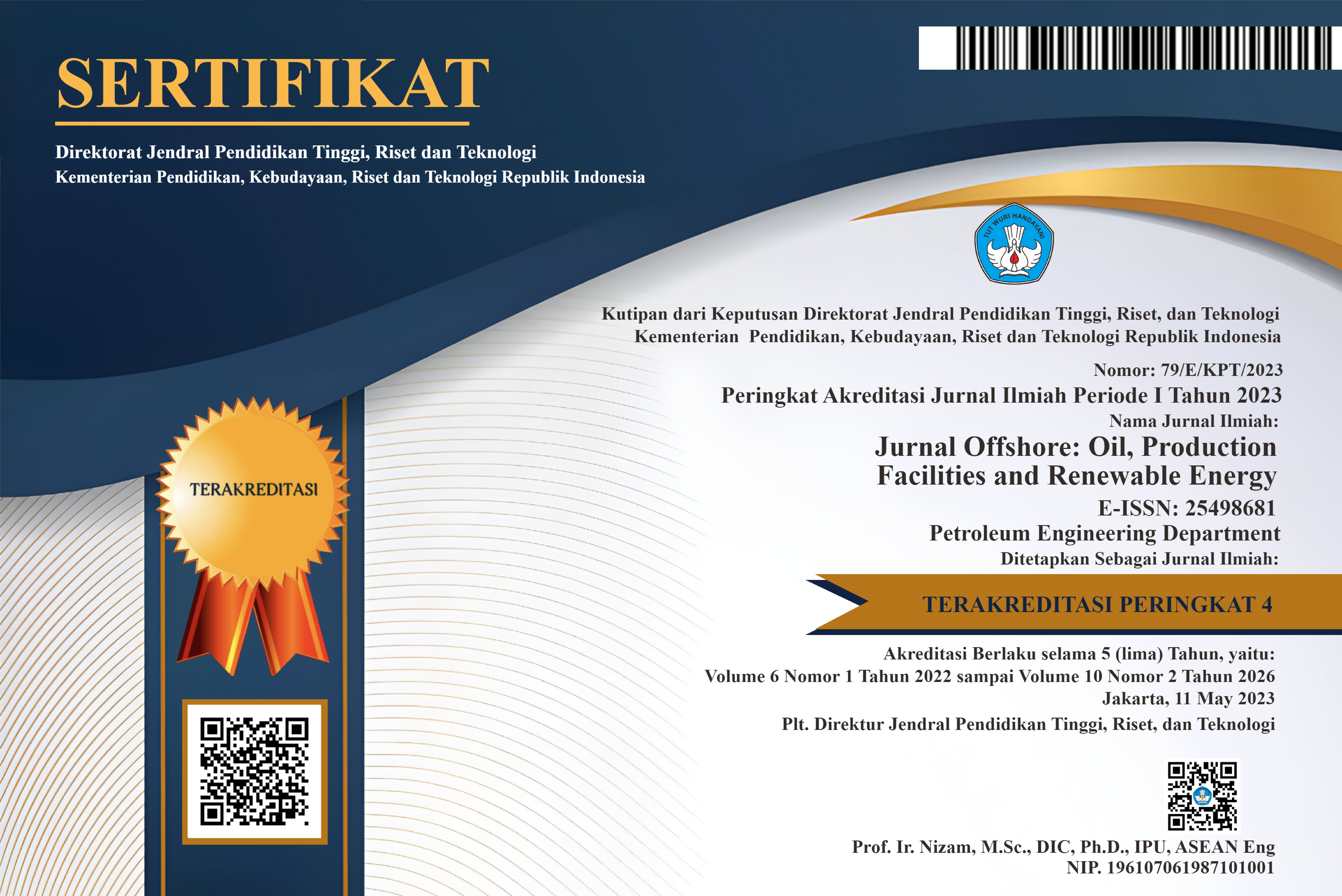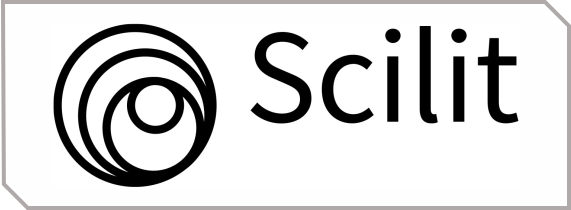Optimasi Electrical Submersible Pump (ESP) Pada Sumur MFR-21 Berdasarkan Keadaan Sumur di Masa Depan
DOI:
https://doi.org/10.30588/jo.v8i1.1888Abstract
When wells are produced continuously, the reservoir pressure will continue to decrease resulting in decreased production performance from the well. To optimally increase the rate of production, optimization is carried out using an Artificial Lift Electrical Submersible Pump. Based on data from the journal, "MFR-21" well had previously been installed Electrical Submersible Pump but was no longer functioning due to the condition of ESP pump not running or dead due to damage, so the author's goal is to optimize the pump and predict the condition of the well in the future until when the pump is no longer optimal by using Wiggins 3 Phase IPR and carrying out a scenario of decreasing reservoir pressure to predict the Future IPR "MFR-21" well. The results of 3 Phase Wiggins IPR curve analysis obtained a total production rate (Qt/Qmax) 6257 bfpd. Obtained a target production rate of 5005.6 bfpd it is recommended to use the ESP design with the Centrilift GC-8200 pump which has a production recommendation 4400 – 10000 bfpd with a number of stages 168, Horse Power 281 HP, and pump efficiency 69%. As well as using the Future IPR method to reduce 3 reservoir pressures, namely 1750, 1000, 500. When the reservoir pressure reaches 1000 and 500 psia the pump is no longer optimum because the target Q at reservoir pressure is not included in the pump production recommendations. So at reservoir pressure 1000 and 500 psia it is necessary to re-optimize the pump again according to the condition of well.
Downloads
Published
How to Cite
Issue
Section
License
Copyright (c) 2025 Abdi Suprayitno, Muhammad Fauzi Ramadhan, Rohima Sera Afifah

This work is licensed under a Creative Commons Attribution 4.0 International License.
Authors retain copyright and grant the Jurnal Offshore right of first publication with the work simultaneously licensed under a Creative Commons Attribution 4.0 International License that allows others to share (copy and redistribute the material in any medium or format) and adapt (remix, transform, and build upon the material) the work for any purpose, even commercially with an acknowledgement of the work's authorship and initial publication in Jurnal Offshore. Authors are able to enter into separate, additional contractual arrangements for the non-exclusive distribution of the journal's published version of the work (e.g., post it to an institutional repository or publish it in a book), with an acknowledgement of its initial publication in Jurnal Offshore. Authors are permitted and encouraged to post their work online (e.g., in institutional repositories or on their website) prior to and during the submission process, as it can lead to productive exchanges, as well as earlier and greater citation of published work (See The Effect of Open Access).















